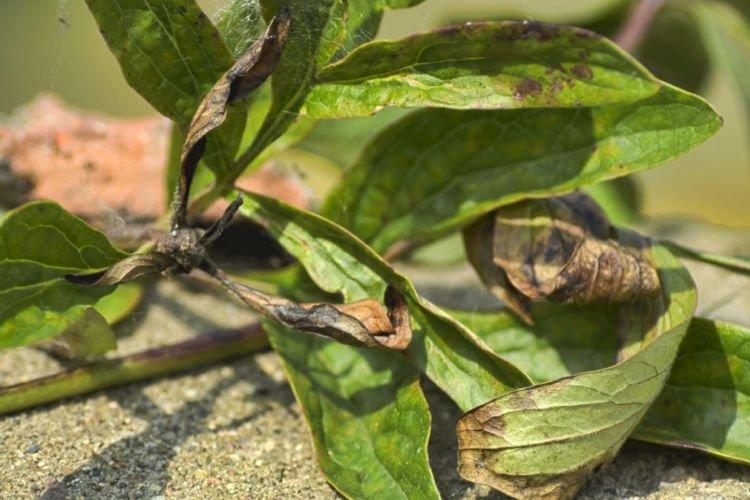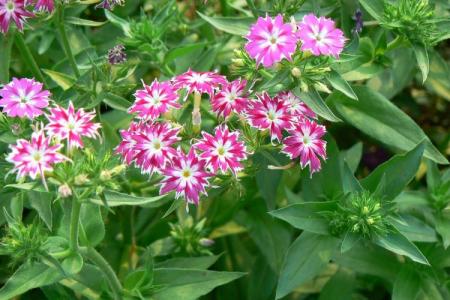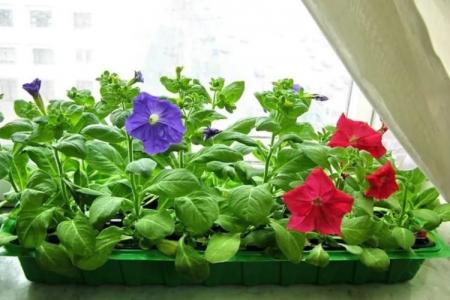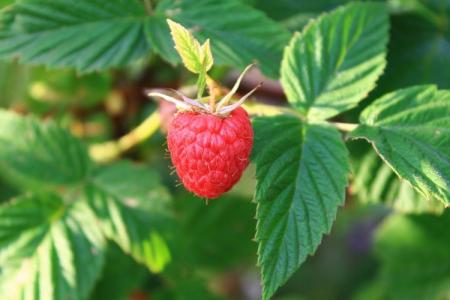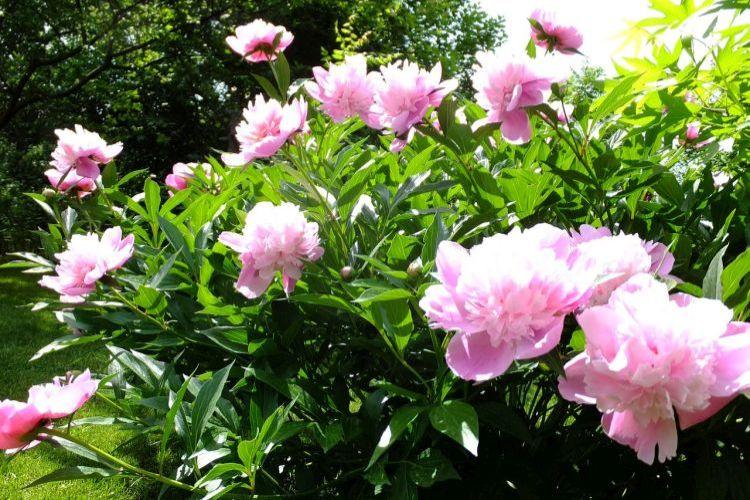
Luxurious garden peonies impress with their striking appearance. Huge lush flowers attract attention at first sight, and there is simply no one indifferent. But, alas, even they are not immune from unpleasant diseases, fungi or viruses. Most problems show up on the leaves first, so it's important not to miss the moment!
Leaves turn yellow and dry
At the end of the season, the leaves of peonies turn yellow, because this is a natural development of their life cycle. But if they start to dry in the middle of summer - it's time to be on your guard!
- Yellowness and dryness occur if the peonies lack moisture. But they also cannot be poured, because rotting will begin;
- Scattered yellow stripes and strokes that are increasingly intertwined with each other - a symptom of ring spot. The virus does not affect the growth and flowering of the plant for a long time, although in the future it can completely destroy it;
- Chaotic yellow spots on the leaves that are woven into a pattern and diverge further and further - a viral mosaic. At later stages, small necrotic foci appear;
- Verticillary wilting leads to the fact that the leaves wither and dry. Most often, it manifests itself during flowering, and the pathogen can be detected by dark vessels in the cut of the shoots;
- The rattle virus was originally tobacco, but it has already spread to other plants. It leaves rings, streaks and streaks in all shades of pale green and yellow.
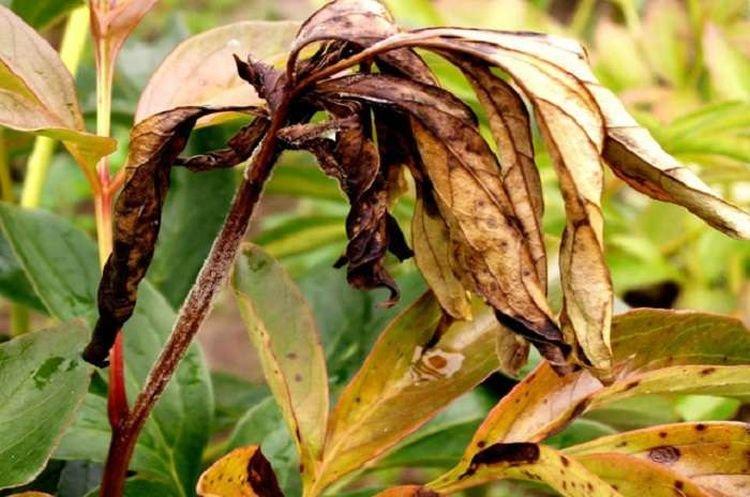
Brown spots on the leaves of peonies
Spots on peonies are red, brown and even crimson. Basically, the problem is in the fungus or in the deficiency of certain microelements.
- Yellow-brown rust spots on the leaves of peonies can take on an unusual purple tone. On the reverse side, pads covered with spores swell;
- Brown spots of septoria gradually stretch out and darken on both sides. The more they become, the more they merge into one spot, and the peony weakens;
- Large spots of a bizarre shape characteristic of cladosporium, which comes to the garden with the beginning of summer and the first hot days;
- Small brown spots with a purple edge scatter on leaves with phyllostictosis. When they stretch and grow, the middle may brighten;
- Brown, bluish and purple spots that gradually grow from the edge - leaf spot. Foci of fungal spores are visible at the tips;
- Leaves begin to darken and rot due to an excess of nitrogen. Peonies need top dressing, but they should be moderate and clearly according to the instructions.
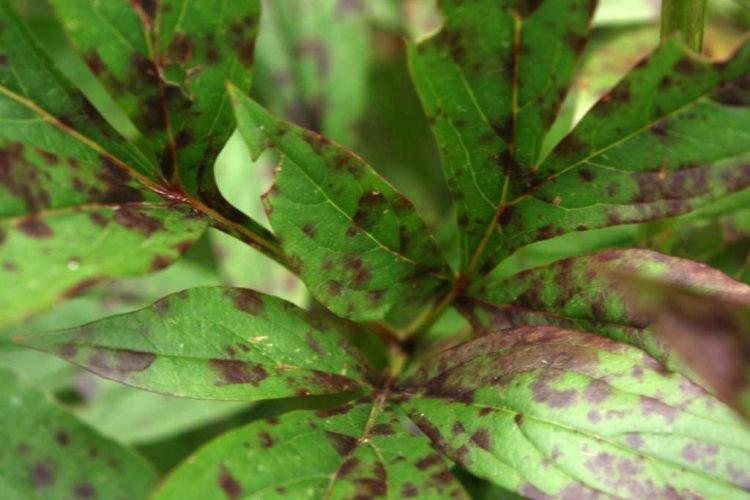
The leaves of peonies turn black
Peony leaves rarely turn black, and most often this indicates damage to the root system. It is very difficult and almost impossible to restore such a plant.
- Cladosporium spots are small at first, but later they can completely ring the leaf, turn black and seem burned out;
- A bacterial burn leads to the fact that whole shoots with leaves "burn" to blackness.
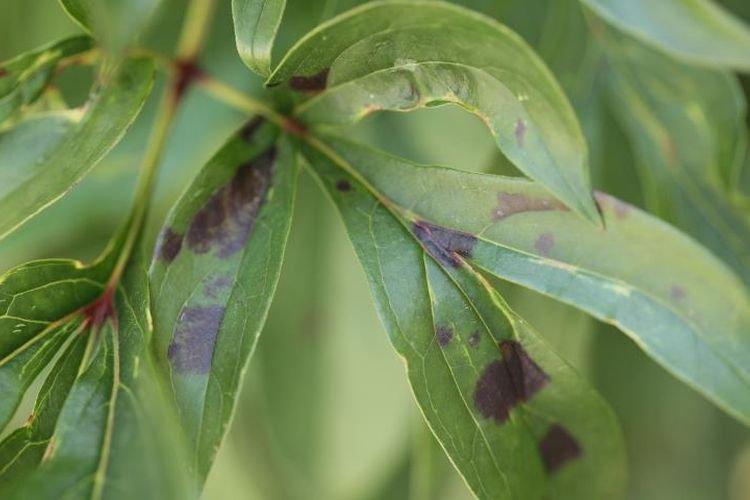
White bloom on the leaves of peonies
A velvety whitish bloom is a spore of a fungus that readily infects spreading peonies. It can also be a whitish spider web left behind by pests.
- Powdery mildew covers the leaves with an abundant white bloom, which is clearly visible even from afar. No outdoor or indoor plants are insured against it;
- White rot leaves a faded, but more uniform coating on the leaves;
- Plaque of gray mold is slightly darker and can cover all ground parts of peonies. Most often it manifests itself in the spring, when it is still cool and there are heavy rains;
- The spider mite leaves a thin whitish cobweb everywhere, which also resembles a raid from a distance.
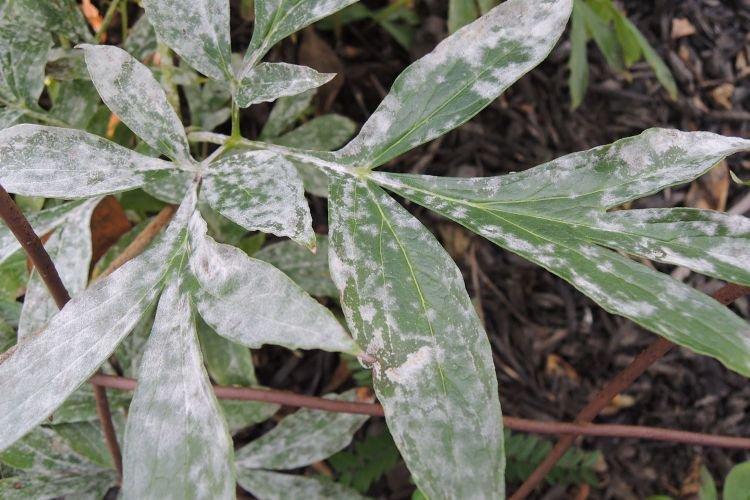
Pale and light leaves
The leaves appear visually healthy, but will irreversibly lose color if the plant weakens.The most common reason is improper containment conditions.
- Peonies are unpretentious to the conditions, but they bloom profusely, so after all, regular feeding will not be superfluous. If there is not enough food, then the first thing to do is fade and wither the leaves;
- Yellow dots merge into solid spots, and the leaves turn pale and weaken when the peonies are eaten by aphids.

Peony leaves curl
Curling is a rather rare occurrence for peonies. Leaves are deformed as a last resort because the plant is trying to accumulate resources.
- The leaves become smaller, wither, curl and stop in development if the peony is affected by a nematode;
- The symptomatology of Lemoine's disease looks almost the same. It is incurable and leads to the absence of flowering and death of the bush;
- Leaves curl up when eaten by beetles, caterpillars or ants. Peony buds give off a sweet substance, so the plant is very attractive to pests.
